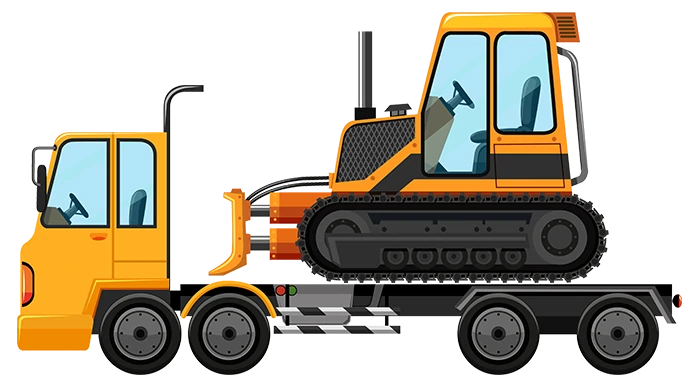Superelevation, also known as Banking or Cant, is a technique used in road and railway design to enhance the safety and comfort of vehicles travelling around curves. It is a crucial element in road design, particularly for high-speed curves. It involves raising the outer edge of the road higher than the inner edge, creating a sloping surface that assists vehicles in navigating turns with greater safety and efficiency. This article explores the concept of superelevation in road design, its purpose, benefits, and its impact on driver comfort, vehicle dynamics, and overall road safety.
Understanding Superelevation:
Superelevation refers to the transverse slope applied to a road surface, where the outer edge of the pavement is raised relative to the inner edge. This intentional slope is designed to counteract the influence of centrifugal force, minimizing the risk of vehicle overturning and lateral skidding when navigating curved sections of the road. First understanding the it would give the inside of road design features along the turning and curving road.

Definition of Superelevation (e):
Superelevation is defined as the deliberate transverse sloping or cross-fall of the road surface on a horizontally curved section, where the outer edge of the pavement is raised higher than the inner edge to counteract the influence of centrifugal force, minimizing the risk of vehicle overturning and lateral skidding when navigating curved sections of the road. The expression of superelevation is “e”.
Purpose of Superelevation:
This design technique helps vehicles navigate curves more safely and efficiently by counteracting the centrifugal force experienced during cornering. The primary reasons for providing superelevation are:
- The first primary reason to provide superelevation in road design is to increase the traction between the wheel and the road surface. This would be achieved by countering the effect of centrifugal force generated by speedy vehicles and minimizing the risk of skidding the vehicle.
- The secondary reason could be the allowance of vehicles to negotiate curves at higher speeds while maintaining control and stability. By reducing the lateral forces acting on the vehicle, it provides a smoother and safer transition for the driver.
- The cross-slop provided in the road surface assists in draining rainwater from the road surface quickly. The slope ensures that water flows towards the outer edge, preventing pooling and hydroplaning, which can result in loss of control.
Benefits of Superelevation:
The paragraph above highlights the purpose of superelevation, and understanding the advantages it offers insights into the significance of implementing it on curved roads. The benefits of superelevation on the road include:
- Improved vehicle stability and traction during cornering
- Reduction of lateral forces acting on vehicles
- Increased cornering speeds without compromising safety
- Enhanced driver comfort and reduced discomfort due to centrifugal forces
How Does Superelevation Work?
It involves tilting the surface of the road or track inward towards the centre of the curve. This inward slope compensates for the centrifugal force experienced by vehicles when they negotiate a curve, helping to counteract the tendency to slide or overturn.
The principle behind superelevation is based on physics. When a vehicle moves along a curved path, it experiences an outward force known as centrifugal force, which is proportional to the square of the vehicle’s speed and inversely proportional to the radius of the curve. This centrifugal force pushes the vehicle away from the curve, potentially causing instability or loss of control.
By introducing superelevation, the road or track surface is raised on the outer edge of the curve and lowered on the inner edge, forming a banking angle or cross slope. This slope assists in directing the centrifugal force toward the centre of the curve, effectively reducing the lateral force acting on the vehicle. As a result, the tires or wheels have increased traction, and the vehicle can navigate the curve more safely and comfortably at higher speeds.
The amount of raising the edge curve required depends on several factors, including the design speed of the road or track, the radius of the curve, and the anticipated friction between the tires or wheels and the road surface. The design process involves calculating the appropriate superelevation rate to ensure that the lateral forces experienced by the vehicle are within safe limits.
Also, read: Geometrics Of Hill Road: Effective Design Criteria For Hill Road
Limits for Superelevation:
There should be certain limits while providing the cross-slop on the road to improve the easy vehicle manoeuvre and handling of the vehicle by the diver. Thus maximum limits and minimum limits as per IRC are as below.
Maximum Limits
As per the guidelines provided by the Indian Roads Congress (IRC), the maximum recommended superelevation for areas affected by snowfall is 7%. Conversely, for areas unaffected by snowfall, the recommended maximum superelevation is 10%.
Minimum Limits
Road camber, also referred to as cross slope, represents the minimum superelevation of a road. It is a transverse slope intentionally provided to facilitate efficient rainwater drainage and prevent vehicles from slipping or skidding.
IRC Recommended Value for Camber
| Types of Surface | Heavy Rainfall | Light Rainfall |
|---|---|---|
| Cement concrete and high-type bituminous surface | 1 in 50 (2%) | 1 in 60 (1.7%) |
| Thin bituminous surface | 1 in 40 (2.5%) | 1 in 50 (2.0%) |
| WBM and gravel pavement | 1 in 33 (3.0%) | 1 in 40 (2.5%) |
| Subgrades, earth roads and shoulder | 1 in 25 (4%) | 1 in 33 (3.0%) |
Also, read: Understanding Road Camber: Effects On Vehicle Handling And Road Safety
Superelevation Formula
The calculation for determining the required superelevation on horizontal curves can be derived using the following formula, which assumes that the centrifugal force at three-fourths of the design speed is offset by the superelevation, while the remaining one-fourth is countered by side friction.
e = (B.V2 )/ (g.R)
Where:
e = Superelevation (expressed as a decimal or percentage) B=Width of the carriageway
V= Design speed of the vehicle (in meters per second or feet per second)
g = Acceleration due to gravity (approximately 9.81 m/s^2 or 32.2 ft/s^2)
R = Radius of the curve (in meters or feet)
The superelevation obtained from the aforementioned expression should be capped at 7 per cent. Nevertheless, in urban areas with frequent intersections, it is advisable to restrict to 4 per cent. This limitation is aimed at enhancing construction convenience and ensuring smooth and safe turning manoeuvres for vehicles.
In cases where the superelevation value calculated using the expression above is lower than the existing road camber, it is advisable to maintain the normal cambered section throughout the curved portion without implementing any additional superelevation.
Also, read: 12 Types Of Cracks In Asphalt Pavement | Symptoms | Causes | Treatment Of Defects
FAQs:
Q: What is superelevation?
Ans: Superelevation is the transverse slope or cross-fall applied to a road surface on a horizontal section, where the outer edge of the pavement is raised relative to the inner edge to overcome the centrifugal force developed by speedy vehicle and to minimise the risk of vehicle overturning and lateral skidding when navigating curved sections of the road.
Q: What is the formula to calculate superelevation as per IRC?

Ans: The formula to calculate superelevation based on IRC is given by:
e = Superelevation (expressed as a decimal or percentage)
V= Design speed of the vehicle (in meters per second or feet per second)
g = Acceleration due to gravity (approximately 9.81 m/s^2 or 32.2 ft/s^2)
R = Radius of the curve (in meters or feet)
Q: What should be the superelevation transition length?
Ans: The rate of change also known as transition length should not be steeper than 1 in 150 for roads in plain and rolling terrain, and 1 in 60 in hilly terrain. The formula for determining the minimum length of the transition, considering a maximum superelevation of 7%, is also considered.
References:
- Khanna, S.K., & Justo, C.E.G. (1971). Highway Engineering (8th ed). Roorkee (U.A.): Nem Chand & Bros. https://www.google.bt/books/edition/Highway_Engineering/CYOeQwAACAAJ?hl=en
- Fwa, T.F. (2006).The Handbook of Highway Engineering. Taylor & Francis Group, LLC
![]()







